It’s like 7D2D, Rimworld, and Westworld had a premature baby.
Type: Single-player
Genre: RPG
Developer: Helios Production
Publisher: Helios Production
Release Date: 15 Apr, 2020


Introduction
The second Steam game from independent developers, Helios Production, thrusts you hundreds of years into the future, where your citizen rating determines whether you’re given free access to the ultimate in VR dream park entertainment: Heavenworld!
Since you can’t play anything more than the great scene-setting introductory sequence unless you’re a model citizen, your rating gets you a quick slightly woodenly translated discussion with Heavenworld’s manager, before you step into one of the VR booths and are on your way to a recently post-apocalyptic world inhabited by infinitely respawning zombie hordes and small groups of NPC survivors.
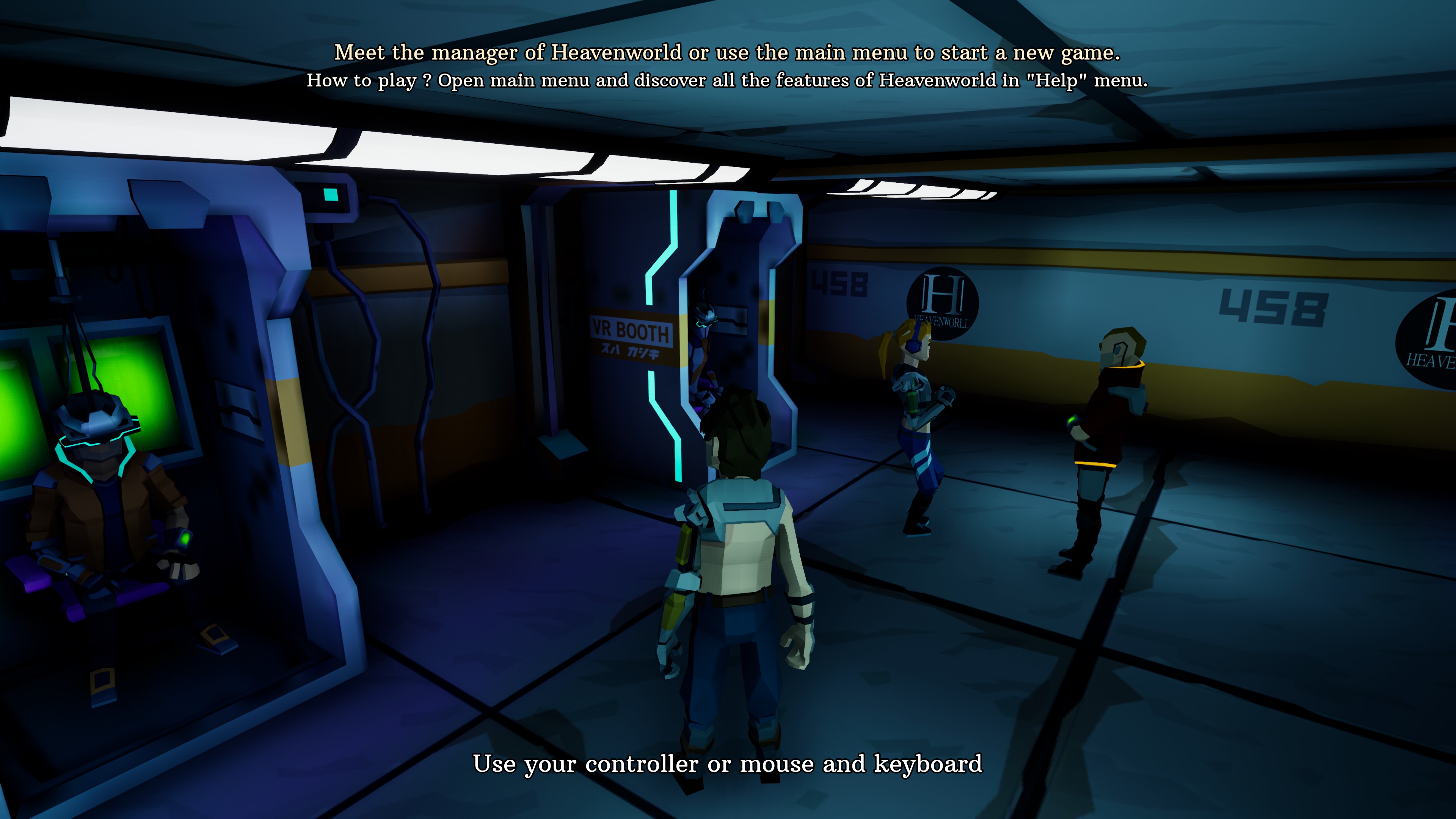
In the Beginning
The game begins with a rather plain title screen, which automatically drops you into a rather strange introductory set once loading is completed. Here you’re in control of a low-poly topless dude with a cyber-arm and frizzy hair, standing in a small part of a futuristic city. Small groups of people crowd the roadside and ahead of you is a building with “Heavenworld” scrawled across it, above which a beautiful and continuous stream of fireworks leave sparkling trails into the night sky, before exploding in a crescendo of colour (and somewhat muted sound).
You can do very little in this sequence: walk forward (with the controller or WASD) and briefly examine your fellow humans, learning their Citizen rating, income, and “value”, whatever that might mean, and eventually encountering the Manager of Heavenworld, who provides you with a very brief description of what’s going on.
Though this provides nothing more than a fancy way of setting the scene and delivering a few lines of useful background information — and it can be skipped by pressing Escape and choosing to start a game from the menu — it impressed me greatly.
After this sequence you’re taken to either the game configuration screen, from which you can choose a pre-defined mission to play, customise it, or roll your own, all using the provided Official Map; or the map editor screen, from which you can create your own game worlds on which to play. The configuration options are many.
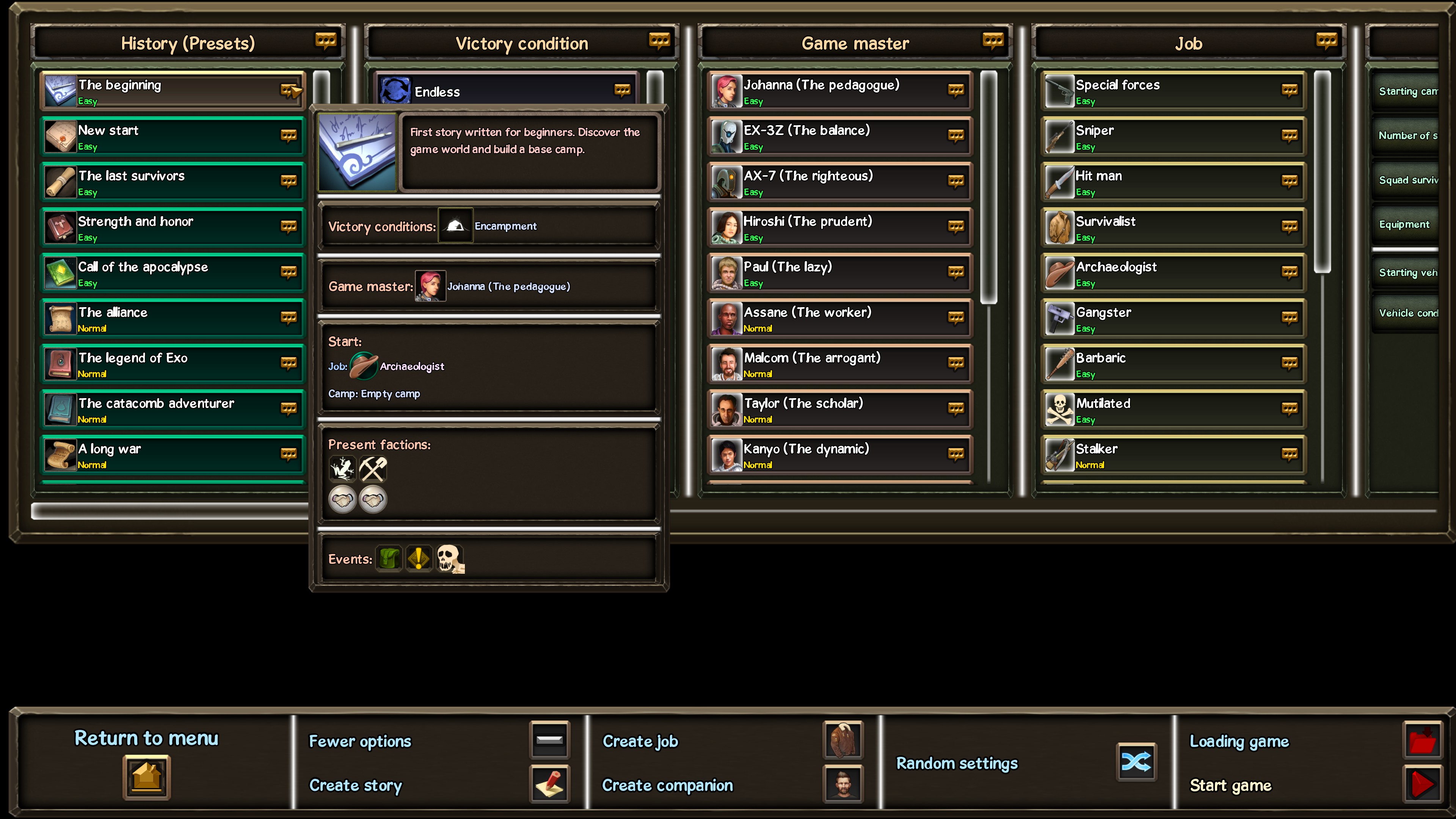
I’ve spent very little time in the map editor, so for this review I’ll simply say it’s a great idea, but pretty overwhelming, while also being a little limited in some ways. The game features Steam Workshop support, too, and user-made maps are already appearing, which is great for longevity / replayability. The rest of this review focuses on the game as experienced on the Official Map.
Gameplay
The core gameplay ultimately has you controlling your chosen character in either first- or third-person view, as he or she walks slowly about the detailed and interesting low-poly world, killing low-poly zombies, and looting resources and equipment from bags, chests, barrels, and a small assortment of other container types. While you wander you must continually top up your food and water gauges, which drop with time, as well as your health gauge, which drops with any damage taken in zombie combat, in typical survival-game fashion. If any of these gauges drops to zero, it’s game over and you’re ejected from the Heavenworld simulation, back to the introductory area.
Collected resources can be deposited at a faction drop-off (either your own faction or an AI-controlled one) and used to expand your camp with buildings and objects, such as workshops, recycling stations, farms, water collectors, infirmaries, and quite a few more. Some of these buildings and objects allow you to craft useful items, weapons, or second-tier resources, while others may only be used by AI-controlled members of your faction, assuming you manage to recruit any from the survivors on the map.
The Official Map is static, in that objects are always at the same location every time you play a mission on it, but NPC and loot spawning appear to be pseudo random, within certain unpublished rules. For example, zombies seem to spawn more at night and in clusters more often than singly. I believe some locations and container types are more likely to spawn certain loot, though it’s possible that’s some sort of perception bias on my part based on what I remember finding in certain places during my play time.
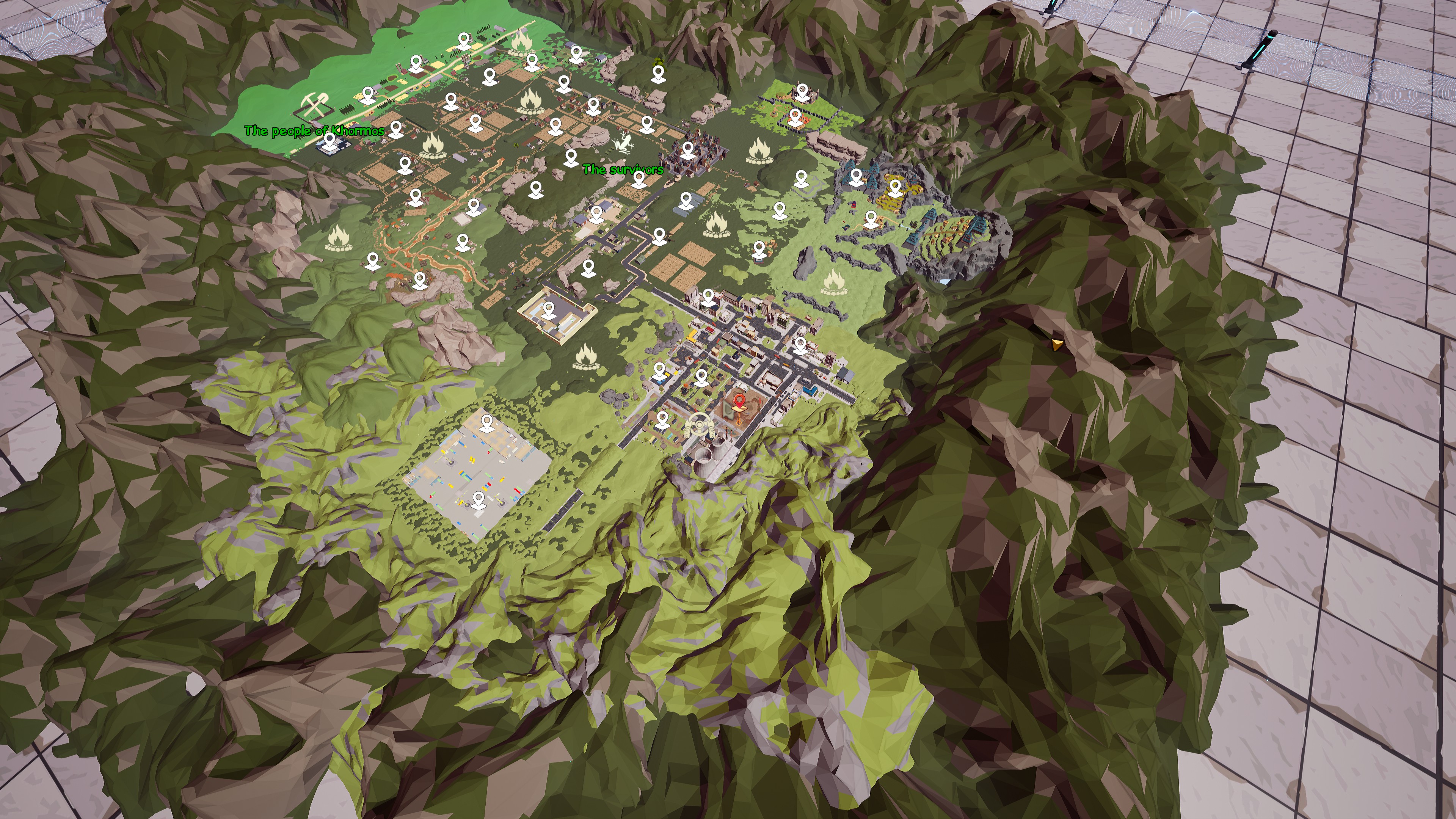
Enemies have invisible fields of view, but they’re basically what you’d expect: an arc in front and some way to both sides of the character’s facing. Approaching an enemy outside of its field of view allows you to attack it unaware, giving you an easy first hit to start a combat encounter and, depending on your character’s skills, potentially causing extra damage. Being seen by an enemy or hitting it causes it and any other enemies in its immediate vicinity to all turn and focus on any threats (usually you).
Combat itself is very simple: right click to focus an equipped ranged weapon on the closest threat (with auto-aim; alternatively you can manually aim in this mode), or left click to attack with your currently equipped weapon, be it ranged or melee, or your fists if you’re unarmed. Only one ranged and one melee weapon can be equipped at once, with CTRL used to swap between them. Ranged weapons seem to be automatically unloaded of ammunition at certain unexpected (and inconvenient!) times.
Exploration and killing enemies provide experience points (XP). Earn enough of these and your character gains a skill point, which can be spent on increasing the level of one of your skills from Terrible, to Initiated, Competent, and then Master level. These are iterative improvements on your character’s abilities, such as hitting harder or running faster, or being able to open harder locks or lead more followers or faction members.
Artificial Intelligence
One thing about Heavenworld that immediately grabbed my attention when I first saw the Steam store page for it was the mention of Gamemasters, AI “characters” outside the game-world-within-the-game, who influence and control what goes on within the Heavenworld simulation. These are obviously influenced by Rimworld’s Storytellers. The game features a reasonably large number of these Gamemasters, offering considerable choice in how otherwise identically configured games might play out.
Within the game world, NPC characters are further controlled by different levels of AI, from basic zombie AI that staggers about until it detects a victim or is attacked, then charges at its new target, to much more complicated human character AI within a faction, with task inputs such as craft or scavenge, together with reactive actions such as fighting off attacking zombie hordes or locating food and water to feed itself.
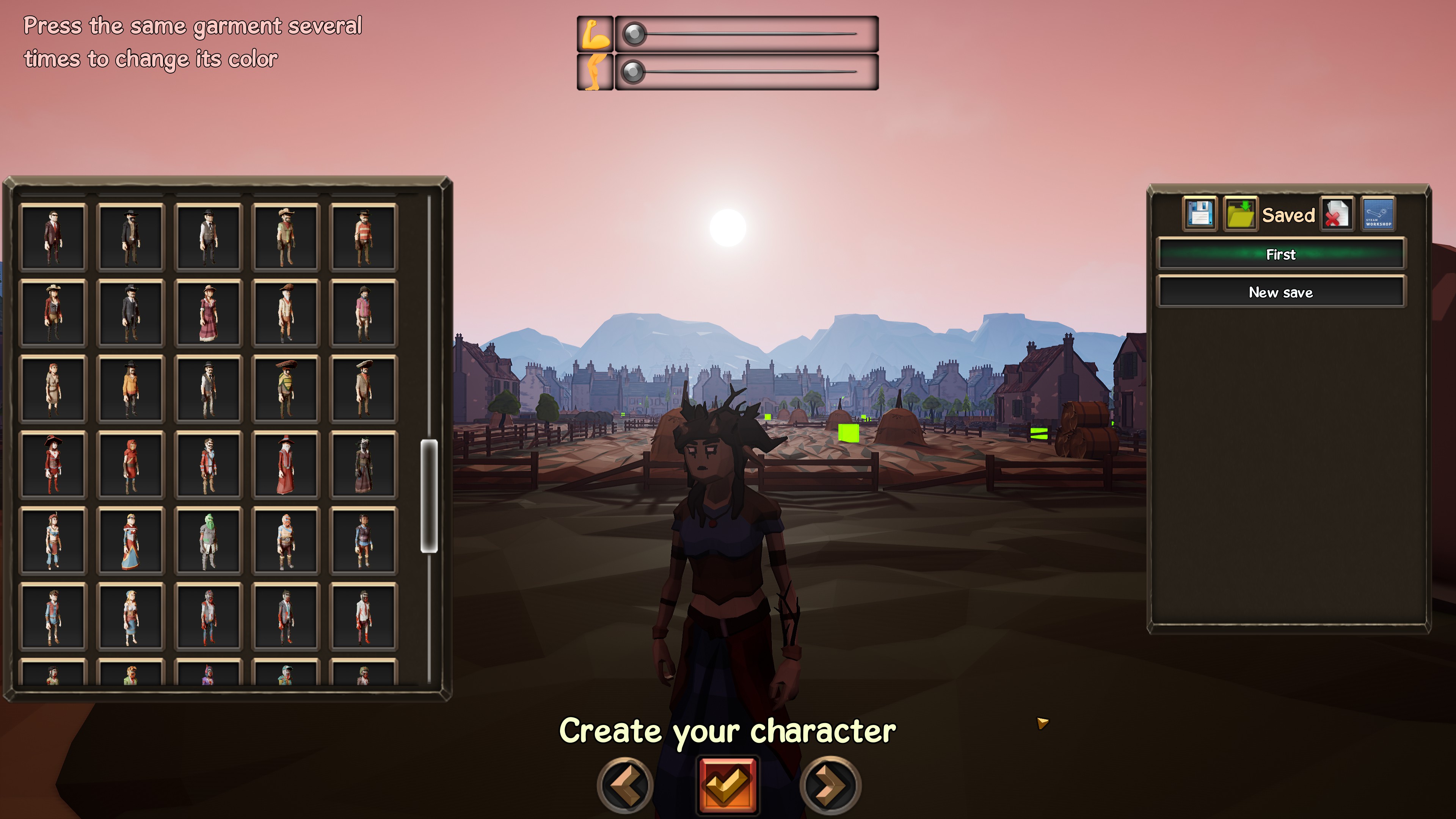
Sights and Sounds
Heavenworld’s graphics are a strange mix. The UI reminds me of something from a mobile application: quite large, with little ellipsis buttons instead of normal tooltips, and nothing in the way of middle- or right- clicking in UI windows. Inventory and equipment management is a chore, with no way to lock items from transfer when using the “all” buttons, clunky equipment manipulation, and fairly limited information on any of the items in your inventory — no “flavour text”. There are also a number of grammatical errors, though the devs have been fixing these.
The game is full 3D, but with a low-poly style. The world and models are all limited in polygon count, which limits the range of looks, expressions, and variation significantly. At first I found it a bit ugly, but it’s grown on me while playing, and I’ve reached the stage where I appreciate the relative simplicity of the style. The excellent animations and fantastic effects certainly helped me to reach this stage, with the traditional zombie stagger being particularly endearing, and the glitch effects that occur (at random?) while you play adding tremendously to the game-within-a-game atmosphere.
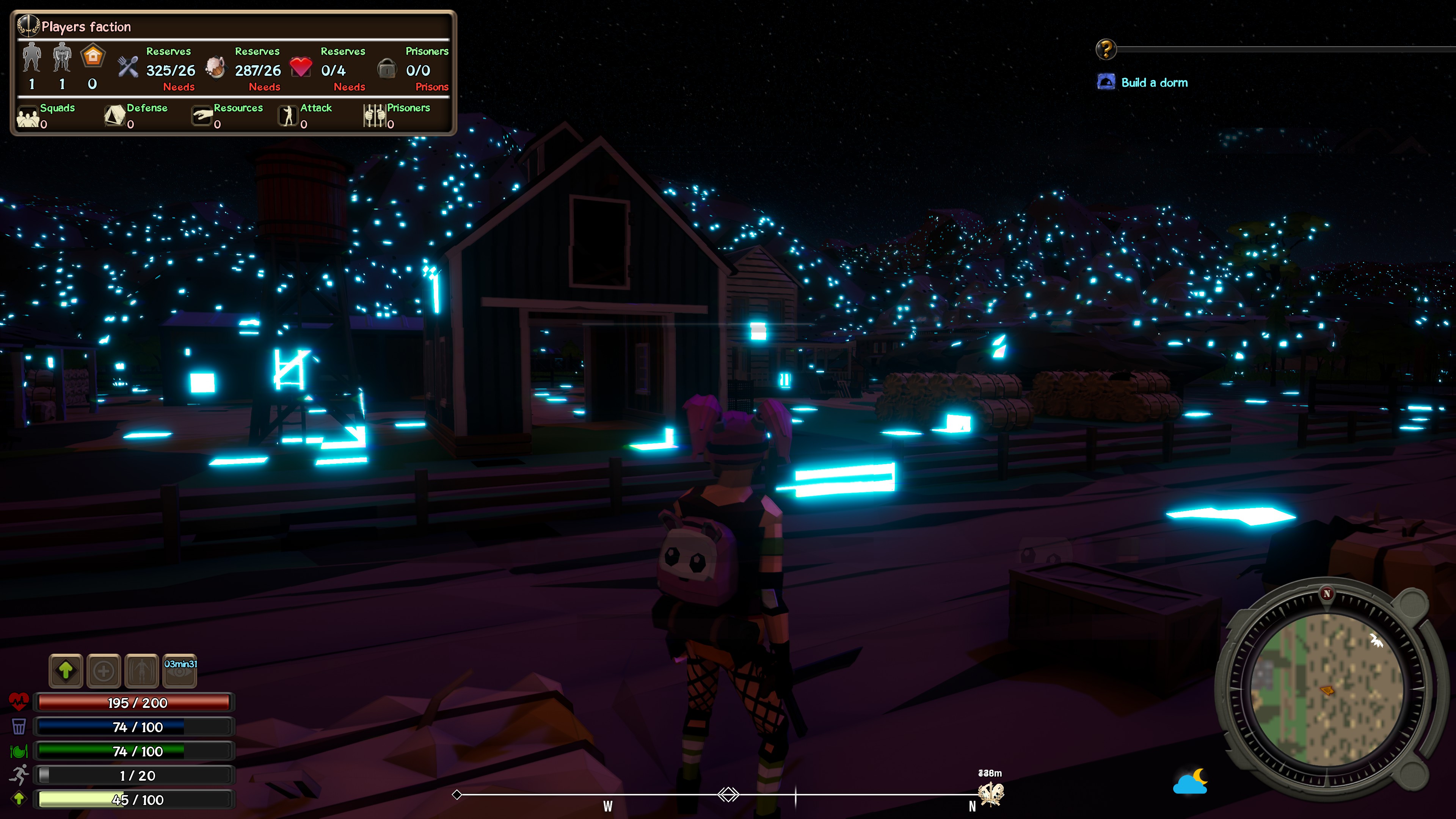
Sound effects are mostly fine, if nothing special, though gun sounds feel decidedly lacklustre. The groans of nearby zombies bring occasional smiles to my face (“braaaaains”), but combat seems rather lifeless and would potentially benefit from more engaging sound reactivity. Music is great, if rather repetitive, with a heavy-bass futuristic-sounding track in the introductory sequence, and a good classical vibe in game. To me it’s reminiscent of Vivaldi’s Four Seasons, but maybe that’s just me.
Putting It All Together
Based on the core gameplay elements, the interesting setting, and the rather cool futuristic Westworld-like atmosphere that the developers have created so well with special effects, even with the low-poly graphics, it seems to me that Heavenworld should be immensely engaging and rewarding to play. But for a number of reasons it’s just not.
The store page makes a big deal of the game’s advanced AI, but I’m left feeling decidedly underwhelmed by it all.
The Gamemasters are, frankly, pants, with each one seeming to simply be a small collection of values from a number of probability categories, such as how often does the Gamemaster interfere with your inventory or affect your health (which are both terrible ideas, anyway), spawn events, or partake in a number of other game-changing actions. None of them have any personality evident in their actions, with each one seeming to randomly choose to take action rather than following any sort of pattern. I suspect game would be better doing away with them entirely and simply adding each of the probability categories to the vast list of configuration options instead.
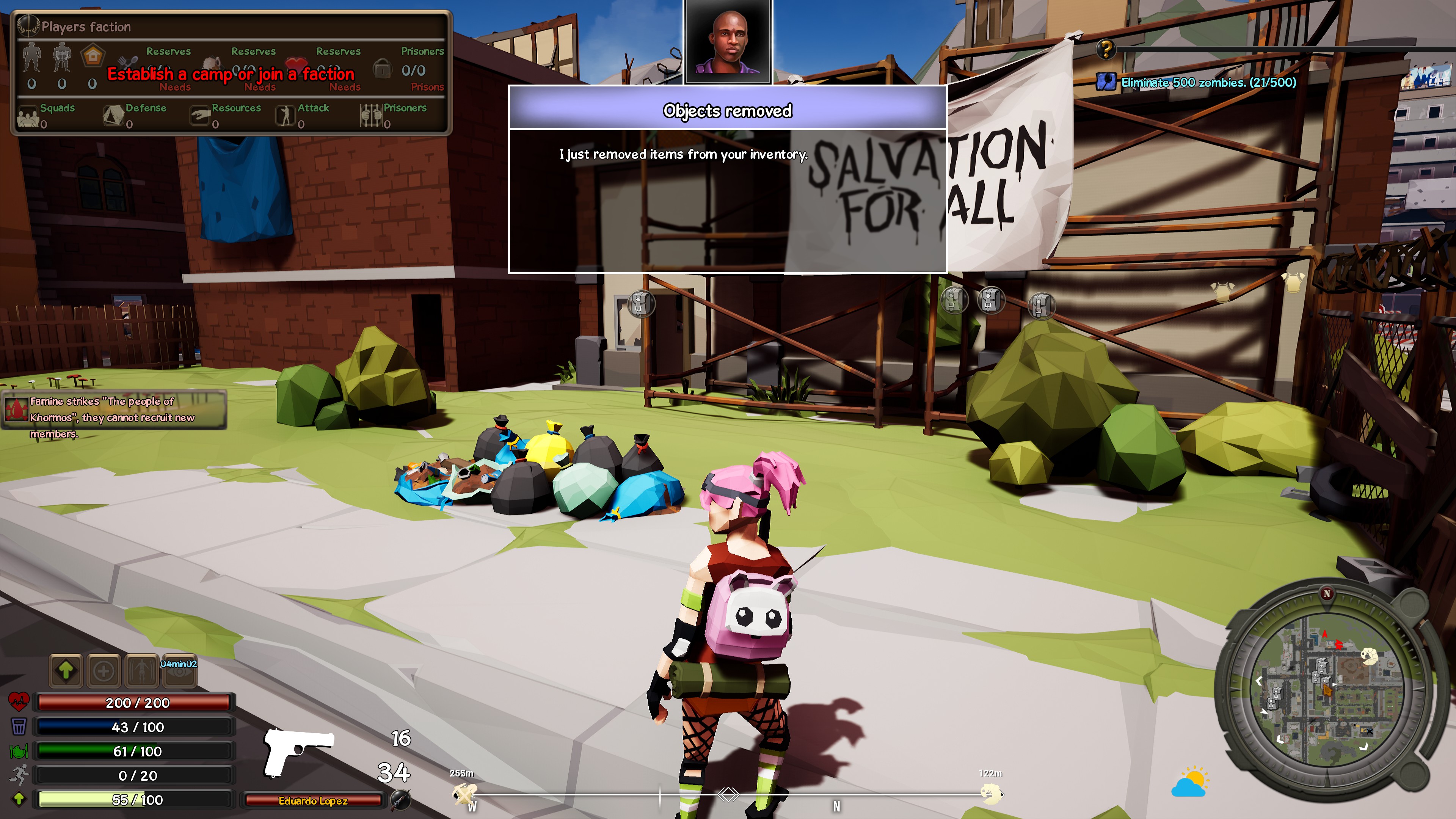
Individual AI is also a bit wonky, which becomes more evident once you have a follower or a faction of your own. NPC faction members partake in various activities, but it’s all too common to have them die of thirst or hunger when there should be more than enough to keep everyone above the minimum — perhaps a selfish sort of survival has been programmed in? Followers will doggedly follow you about the map, but there seems to be no rhyme or reason to when they may choose to engage an enemy. Sometimes a lone zombie will be picked off by your assault-rifle-wielding maniac follower before you even notice it, while at other times the same follower will stand there staring while half a dozen zombies are trying to eat your brains. Meanwhile, the AI governing other faction behaviour seems to be hobbled by some very weird decision making, sometimes building structures that have no dramatic effect on faction survivability in advance of much more important things.
The world itself is moderately large and interesting, with a number of themed areas and many varied assets spread about. But interactivity is minimal; there are no working doors or movers, nothing that changes dynamically, and only the lootable objects can be manipulated. These blend into the rest of the world often, too, so I’d heavily recommend setting the “Valuable loot” option to true in the world configurations, so that lootable objects are highlighted for you (no, I don’t know why it’s called that, either). Of course, doing this does spoil the world a bit, making it plain that, though the map is vast, it’s virtually empty of anything interactive.
I’d also recommend adding points into the Athletics skill first for any character you play. This controls your character’s movement speed. Spend any time walking around the map with low athletics and you’ll feel like throwing in the towel; it’s just so slow and tedious. Unfortunately the vehicles that could make this reasonable by providing much faster free movement over the map have instead been implemented as fast-travel points. You can’t actually drive a vehicle; all you can do is select it and fast travel to another discovered spot on the map.
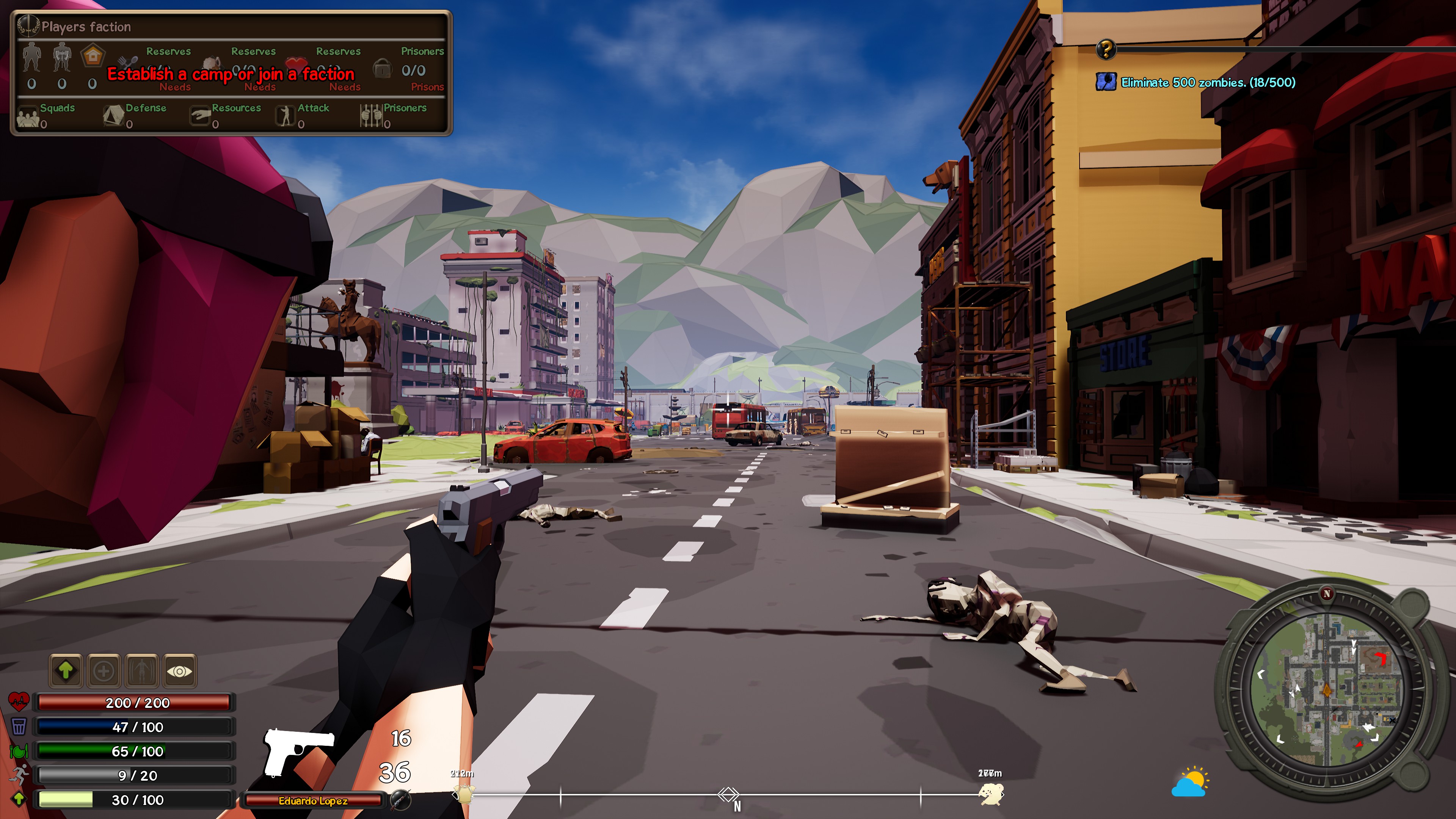
Combat is repetitive and boring, devolving into basically nothing more than kiting your enemies. There are occasional spikes of interest when your follower does something stupid, but really, once you’ve hit a zombie, run backwards a few steps, and hit it again, once, you’ve done it a million times. And I think loot spawning in particular requires some fairly dramatic tweaking; I’ve had difficulty in locating some resources that are needed for a number of buildings, to the point that even the first mission had me wandering about for over two hours until I could find more canvas to build a certain building. Later missions devolved into basically the same thing: searching for hours for one particular resource type, enemy, NPC, or what-have-you.
Insta-kill random events are just silly and NPCs seem to be unaware of them. While an atom bomb took me out instantly only a short time after being announced in one of my early games, a later game had my follower happily standing in a meteor impact zone until he was obliterated.
I realise this is a list of specifics that the game gets wrong, which doesn’t make for great reading, but I hope it gives you a bit of an idea of the most important areas where the game falls down. There are many other smaller issues that could be addressed to improve the experience, too.
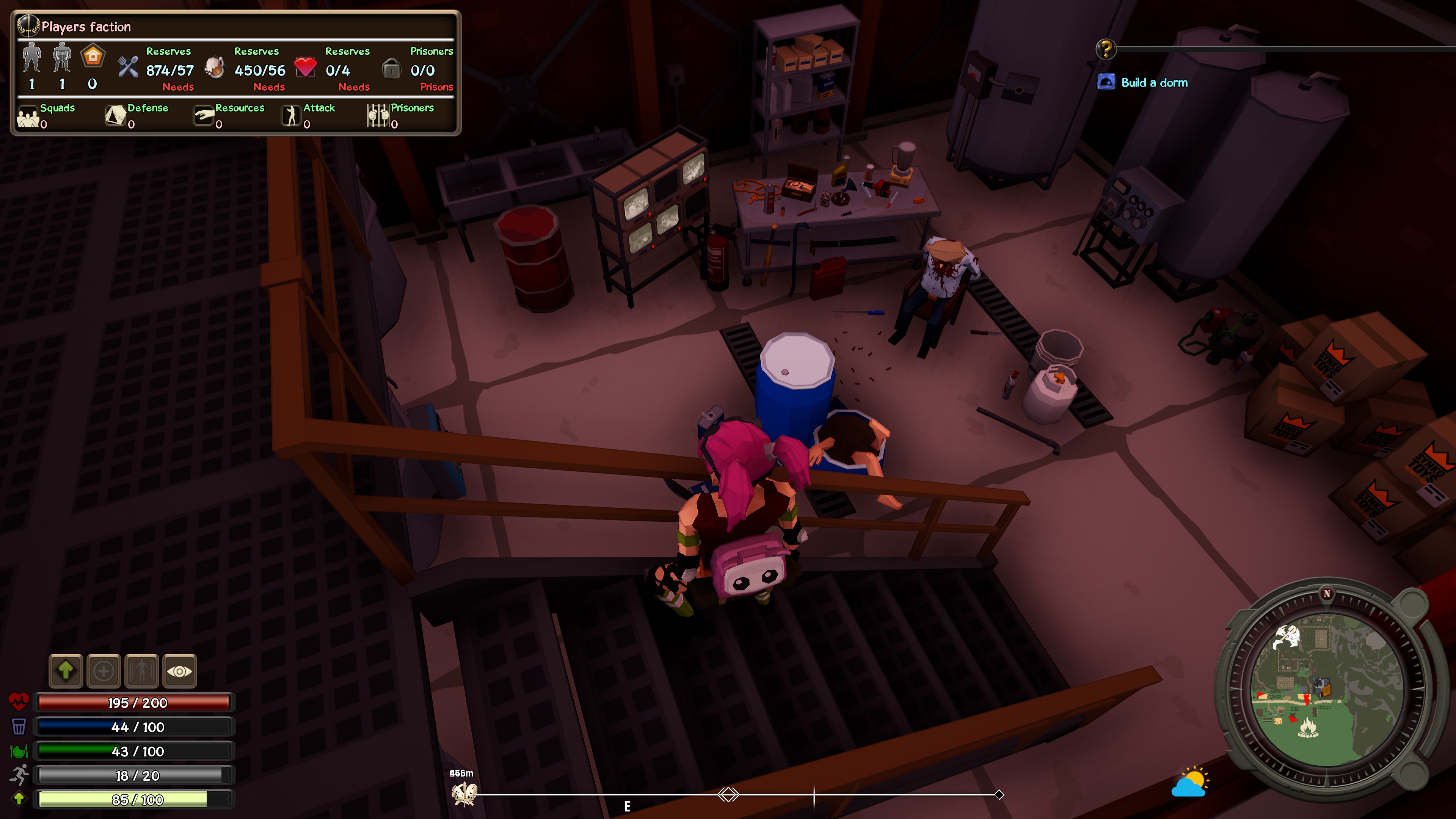
Verdict
While Heavenworld’s setting is well realised and the basic gameplay elements seem reasonably sound on paper, they don’t quite mesh into a coherent and enjoyable whole. There’s also a distinct lack of depth to everything, leading to most of my time in the game being spent wandering aimlessly about the interestingly populated map, bored out of my nut! It’s not a bad game, exactly, but I’m left with the feeling that the game could have been so much more. It feels like a missed opportunity.
So for now I’m afraid it’s a Pause from me. For the price being asked for Heavenworld, there are more engaging and interactive games available. Without some fairly major content additions and system fixes, I can’t imagine playing much more of this myself. The developers are still working at it, however, so don’t completely discount it yet.










